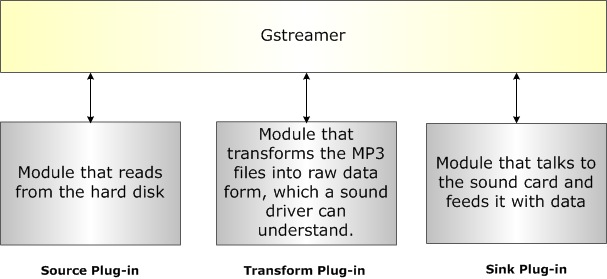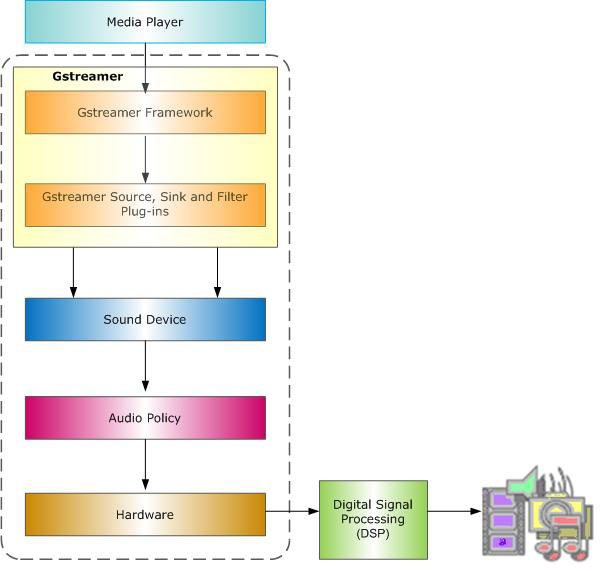GStreamer Overview
GStreamer is a development framework for creating applications like media players, streaming media broadcasters and video editors.
GStreamer is designed to make it easier to write applications easily that handle audio, video, or both. Pluggable components can be mixed and matched into arbitrary pipelines, which consist of a chain of processing elements.
Purpose
GStreamer is an open source multimedia framework that allows you to write any streaming multimedia application, not just audio or video. GStreamer can handle any data flow.
Plug-in handling
Media type negotiation
Clocking and data flow
Description
Element
An element is an object that performs some action on a multimedia stream. Examples of such actions are reading a file, decoding or encoding data and capturing data from a hardware device.
Bin
A bin is a subclass of element. A bin acts as a container for other elements, so multiple elements combine into one logical unit.
Pipeline
A pipeline is a set of data processing elements connected in series, so the output from one element is the input for the next element.
In GStreamer the pipeline is a specialized bin subclass that provides execution of all contained elements. Normally, applications create one pipeline that will manage all the elements contained within it.
Note: Elements can be added to and removed from pipelines based on the use-case being handled. For example a use-case such as playing an MP3 file using GStreamer.
An element can provide a number of pads, which can be either source or sink pads. A pad is a plug or port on an element to link with other elements. The pads are responsible for data flow between the elements. Source pads supply data, and sink pads consume data. Basically, pads are used to negotiate compatibility and allow data flow between elements.
Null
Ready
Pause
Play
GStreamer also provides higher level utilities and components to detect automatically the media type of an application, and to create the best possible pipeline for a use-case. This process is called auto plugging.
Copyright ©2010 Nokia Corporation and/or its subsidiary(-ies).
All rights
reserved. Unless otherwise stated, these materials are provided under the terms of the Eclipse Public License
v1.0.

